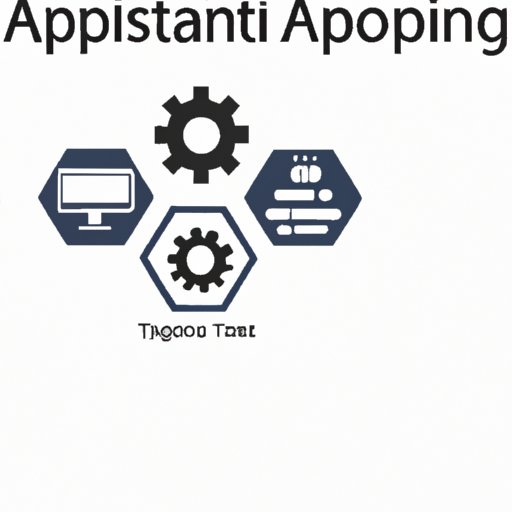Introduction
API automation testing is a process of programmatically simulating user interactions with an application programming interface (API) to ensure that it meets its functional requirements. It helps developers validate the accuracy and reliability of their APIs by automatically running tests against them. This type of testing is especially useful in the development of web applications, mobile applications, and other software systems.
The benefits of API automation testing are numerous. It helps reduce the time and cost associated with manual testing, as well as decrease the number of potential errors. Additionally, automated tests can be run more frequently and on a larger scale than manual tests, ensuring that all aspects of the API are thoroughly tested.
Setting Up Your Automation Environment
Before beginning API automation testing, it’s important to set up the right infrastructure and resources. This includes selecting the appropriate tools and frameworks for testing, as well as having access to the necessary hardware and software. Additionally, you should consider the budget and the amount of time you have available for testing.
When it comes to selecting the right tools and frameworks, there are several factors to consider. First, determine the type of tests you’ll be running, such as functional testing, load testing, security testing, or integration testing. Then, look for tools and frameworks that are specifically designed for the tests you’ll be running. Finally, consider which tools and frameworks are best suited for your team’s skill level and the technology stack you’re using.

Types of Tests to Run
Once you’ve determined the tools and frameworks for your automation environment, you can begin to consider the types of tests you’ll need to run. Here are some of the most common types of tests used in API automation testing:
Functional Testing
Functional testing is a type of test that ensures that an API functions as expected. This includes verifying that the API returns the correct responses to various input parameters, as well as checking that the API meets specific business requirements.
Load Testing
Load testing is a type of test that evaluates an API’s performance under heavy loads. This helps identify any issues that may arise when the API is subjected to large amounts of traffic or data.
Security Testing
Security testing is a type of test that checks an API’s security features. This includes verifying that the API is protected from unauthorized access, as well as ensuring that the API is not vulnerable to common attacks such as SQL injection.
Integration Testing
Integration testing is a type of test that verifies that an API integrates correctly with other components of the system. This helps ensure that the API works properly with other services, databases, and user interfaces.
Establishing Best Practices for Automation
In order to ensure successful API automation testing, it’s important to establish best practices for the process. This includes creating reusable code, documenting your tests, and utilizing version control. Additionally, it’s important to keep track of the tests that have been run and the results they produced.
Creating Reusable Code
Creating reusable code is one of the most important best practices for API automation testing. By creating modular, reusable code, you can save time and effort in the long run. Additionally, this makes it easier to troubleshoot failed tests and identify areas for improvement.
Documenting Your Tests
Documenting your tests is also important for successful API automation testing. This helps you keep track of the tests that have been run and the results they produced. Additionally, it makes it easier to troubleshoot failed tests and identify areas for improvement.
Utilizing Version Control
Utilizing version control is another best practice for API automation testing. This helps ensure that all changes are tracked and that any issues that arise can be quickly identified and resolved. Additionally, it makes it easier to roll back to previous versions if needed.

Leveraging Automation Tools and Frameworks
In addition to establishing best practices for API automation testing, it’s also important to leverage automation tools and frameworks. There are a variety of open-source solutions available, as well as commercial tools and frameworks.
Exploring Open-Source Solutions
Open-source solutions are a great way to get started with API automation testing. These solutions typically require less upfront investment and offer a range of features and capabilities. Popular open-source solutions include Postman, SoapUI, and Apache JMeter.
Choosing the Right Tool for Your Needs
When selecting an automation tool or framework, it’s important to choose the right one for your needs. Consider the type of tests you’ll be running, the technology stack you’re using, and your team’s skillset. Additionally, research available options and read reviews to ensure that the tool or framework you select is the best fit for your project.

Analyzing Results and Refining Tests
Once you’ve run your tests, it’s important to analyze the results and refine your tests as necessary. This includes understanding test output, troubleshooting failed tests, and identifying areas for improvement.
Understanding Test Output
Understanding test output is critical for successful API automation testing. This involves analyzing the results of each test and determining whether the test passed or failed. Additionally, it’s important to understand what caused the test to fail and how to fix the issue.
Troubleshooting Failed Tests
Troubleshooting failed tests is an essential part of API automation testing. This involves identifying the cause of the failure and taking the necessary steps to resolve the issue. Additionally, it’s important to document the steps taken to ensure that the issue does not occur again in the future.
Identifying Areas for Improvement
Identifying areas for improvement is also important for successful API automation testing. This involves analyzing the results of the tests and determining which areas need to be improved. Additionally, it’s important to document the steps taken to ensure that improvements are made in a timely manner.
Conclusion
API automation testing is an essential part of developing reliable and secure web applications, mobile applications, and other software systems. The benefits of this type of testing are numerous, including reducing the time and cost associated with manual testing and increasing the accuracy of the results. To ensure successful API automation testing, it’s important to set up the right infrastructure and resources, establish best practices for the process, leverage automation tools and frameworks, and analyze results and refine tests as necessary.
(Note: Is this article not meeting your expectations? Do you have knowledge or insights to share? Unlock new opportunities and expand your reach by joining our authors team. Click Registration to join us and share your expertise with our readers.)
